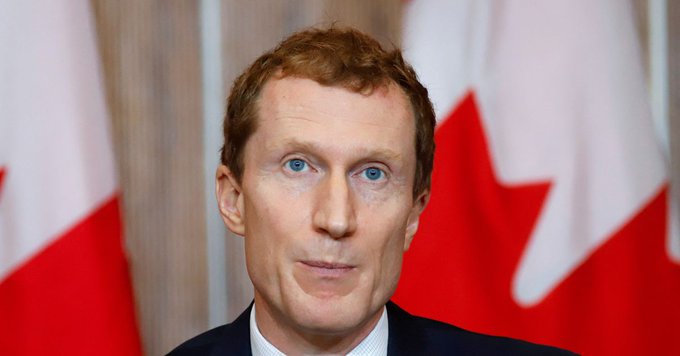
Black Lives Matter: A Fight for Change
The Voice of Canada:
What is happening? Why is this important? What can we do to further educate ourselves and show support?

Queens University
English Language and
Literature & Psychology
On Monday, May 25th, 2020, the Late George Floyd aged 46 years old was brutally and unjustly murdered by three police officers in Minneapolis. He was arrested for allegedly passing a counterfeit $20 bill, and police officers pinned him to the ground claiming he resisted arrest. There are multiple videos circulating that prove he was not, in fact, resisting arrest. One officer, Derek Chauvin, used his knee to pin his neck, and the other two police officers assisted in keeping him pressed down. Derek Chauvin pressed against his neck for 8 minutes while George Floyd begged them to stop, his last words being “I can’t breathe”.

This is NOT how you treat a human being. This was NOT professional. This is NOT why we have law enforcement. This was NOT an accident. This WAS murder. The reality is, those officers would not have done that had he not been a Black man. This type of racial profiling is an infuriatingly common example of the numerous aggressions that Black people endure every single day within our society.
Protestors have been out every day since, fighting for justice to be served for the late George Floyd—a loving, caring, and gentle person whose life was taken due to racism. The ‘Black Lives Matter’ movement erupted like never before, with hundreds of thousands protesting against Police Brutality; fighting for justice that has not been met for centuries.
During the beginning of the peaceful protests, protestors were met with tear gas – a chemical weapon that can cause severe eye and respiratory pain including skin irritation, bleeding, and long-term damage. Why is it that when predominately white citizens were protesting to re-open bars and salons amid the COVID-19 lockdown crisis, and screaming in the face of law enforcement—some of which were armed with weapons— did not cause the law enforcement to flinch. Yet, when people peacefully protested with signs and chanted “I can’t breathe”, demanding justice for the murder of a Black man, they were tear-gassed and shot with rubber bullets? Police Brutality has been an ongoing and persistent issue that has caused the loss of countless Black lives. Enough is Enough.
It’s important to note—police brutality and racism are not just an American issue
On Wednesday, May 27th, 2020, just two days after the murder of George Floyd, Regis Korchinski-Paquet, an Indigenous-Black Canadian woman passed away due a fall from her balcony from her apartment building. The police were called to her
apartment after a phone call from her mother requesting assistance to take Regis to the Centre for Addiction and Mental Health (CAMH). After the police entered, her family heard Regis cry for help, followed by the Police confirming her death. Her family has been persistent in fighting for justice, as they claim that the Toronto Police played a role in her death, having pushed her off the balcony themselves. The Toronto Police have since ruled her death as a suicide. The unjust death of Regis Korchinski-Paquet has caused a number of protests in Canada, demanding a thorough investigation in her murder and against police involvement in her death. This also led to protests regarding other forms of racial injustice due to anti-Black and anti-Indigenous racism.
These aren’t the only cases where a Black person was murdered due to racism and police brutality. Numerous others such as Breonna Taylor, a Black woman who was shot multiple times in her home in the middle of the night. The unjust shooting of Ahmaud Arbery and the heart-breaking murder of Elijah McClain. Justice has not been met for these lives, as their murderers remain free. These are just a few names amongst thousands, who were murdered by the hands of the law and society.
Anti-Black and anti-Indigenous racism is a long over-due conversation that we need to have collectively as a society. Why is there so much prejudice against Black people? Why can’t Black lives matter? Racism is not an individual act. It is a collective of prejudice that holds power against Black lives. Racism is inherent in every culture and community.
Since the earliest days of settlement in North America, Black people have endured discrimination, and have been inappropriately affected due to systemic racism that is present in every organization and workplace. It can be seen within the education system, law enforcement, the healthcare system, and it is prominent within our governing system.
So, what can we do as a society?
Start with acknowledging the internalized racism that is prevalent in every culture and community. Recognize your own internalized racism that may be buried deep within. There are so many ways that both White and Non-Black people of colour perpetuate racism. Such as colourism, engaging in microaggressions and stereotyping, appropriating Black culture, refusing to give up your comfort and privilege. Challenge and confront these ideals, and educate yourself on how they are Anti-Black.
It isn’t enough to think about these issues internally and stay quiet. This is a time of action. Engage in conversations and educate yourself on what is happening right now. Use social media to spread awareness. The refusal to post or speak outside of yourself is a refusal to give up comfort. No one is obligated to share their ideas on social media, however, reflect why it is you who does not want to. Why silently support in a space where no one knows where you stand when you can publicly share your support and use your voice to bring more awareness to this global issue. Confront your family and peers on their ideals, and educate them as well as yourself—no matter how difficult the conversation is.
This is the time to publicly show support and use your voice. A time to advocate for change within our society. Black Lives Matter.


